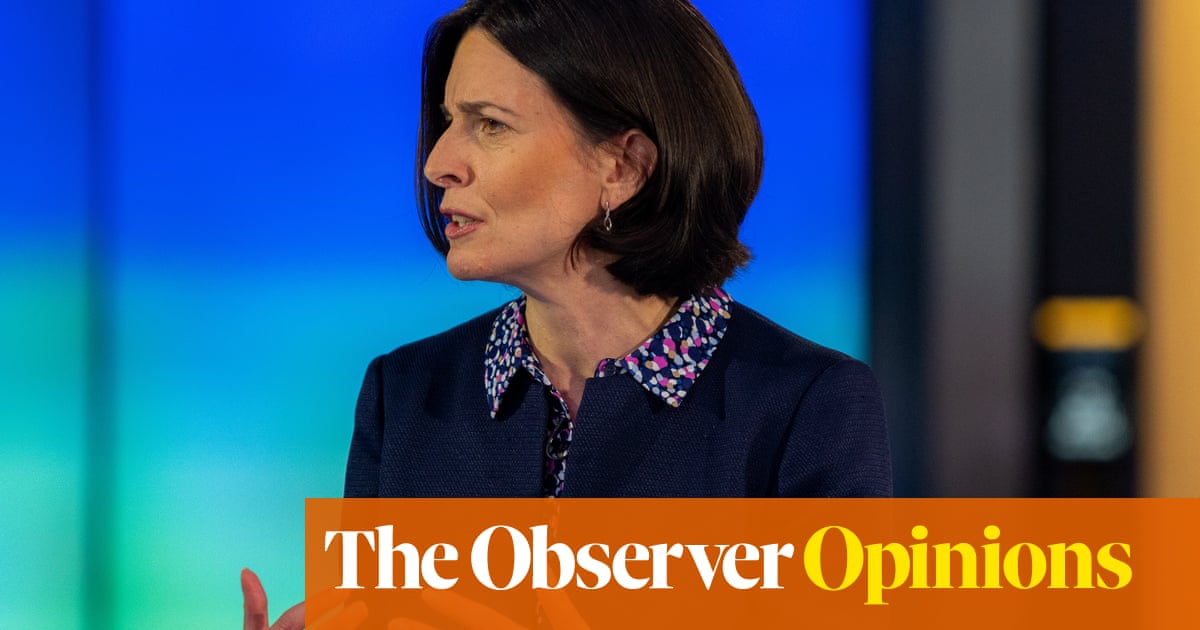


“Monopoly,” said Peter Thiel, Silicon Valley’s answer to Darth Vader, “is the condition of every successful business.” This aspiration is widely shared by Gamman, the new acronynm for the Valley’s giants – Google, Apple, Microsoft, Meta, Amazon and Nvidia. And the arrival of AI has sharpened the appetite of each for attaining that blessed state before the others get there.
One symptom of their anxiety is the way they have been throwing unconscionable amounts of money at the 70-odd generative AI startups that have mushroomed since it became clear that AI was going to be the new new thing. Microsoft reportedly put $13bn (about £10.4bn) into OpenAI, for example, but it was also the lead investor in a $1.3bn funding round for Inflection, Deepmind co-founder Mustafa Suleyman’s startup. Amazon put $4bn into Anthropic, the startup founded by refugees from OpenAI. Google invested $500m in the same outfit, with a promise of $1.5bn more, and unspecified sums in A121 Labs and Hugging Face. (Yeah, I know the names make no sense.) Microsoft has also invested in Mistral, the French AI startup. And so on. In 2023, of the $27bn that was invested in AI startups, only $9bn came from venture capitalist firms – which until recently had been by far the biggest funders of new tech enterprises in Silicon Valley.
What’s going on here? After all, the tech giants have their own “foundational” AI models and have no need for whatever the minnows have built or are building. And then the penny drops: we’ve seen this playbook before – incumbent firms spotting potential competitors in their infancy and snapping them up. Google buying YouTube in 2006, for example; Facebook picking up Instagram for $1bn in 2012. when it only had 13 employees, then acquiring WhatsApp in 2014 (for what then looked like an insane sum – $19bn).
With the 20/20 vision of hindsight, we now realise that these were all anticompetitive acquisitions that should have been resisted at the time – but weren’t. Which is why it is so refreshing to learn that there is at least one regulator – the UK’s Competition and Markets Authority (CMA) – that seems determined to learn from that history.
In a speech delivered to a gathering of American antitrust lawyers in Washington just over a week ago, the CEO of the CMA, Sarah Cardell, gave notice that it was determined to ensure the markets for foundational AI models would be underpinned by fair, open and effective competition, as well as by strong consumer protection. Her concern was that the growing presence of a small number of giant incumbent firms across the AI value chain (the sequence of steps necessary to turn inputs into usable outputs) could shape these markets in a way that harms competition and reduces choice and quality for businesses and consumers.
She listed three key risks to competition: that firms controlling critical inputs for developing foundational models might restrict access to shield themselves from competition; that powerful incumbents could exploit their positions in consumer or business markets to restrict competition in model deployment and thereby distort choice; and that partnerships between key players could reinforce or extend existing market power across the value chain.
She also warned the CMA would be taking action through its formidable investigative powers – including merger control reviews, market investigations, and potential designation under new digital competition legislation – to assess and mitigate the competition risks from the new technology.
To hear a major regulator talk like this about the tech industry was truly remarkable. Cardell was signalling that instead of waiting for problems to arise before acting, the CMA would henceforth be proactive, striving to get ahead of the game rather than trailing behind tech moguls who believe – as the saying goes – in moving fast and breaking things. The CMA, she said, was already tooling up for the task based on what it has learned so far from dealing with tech platforms. It would aim to take a holistic look at the entire value chain of AI model deployment, rather than just focusing on individual parts of the chain. And it will use its merger review powers more aggressively to assess the competition implications of partnerships and investments in AI.
Stirring stuff, eh? But in a way, par for the course for one of the few British institutions that seems able to use post-Brexit freedoms as an opportunity for creativity and innovation. And any mogul who might be tempted to write off the Cardell speech as just fiery rhetoric should ponder the recent track record of the CMA – its robust investigation of Microsoft’s acquisition of Activision Blizzard, for example; or the way it forced Meta to divest itself of Giphy, an online database and search engine that allows users to search for and share animated gif files. Cardell may keep a lower profile than Lina Khan, her counterpart at the FTC in the US, but she clearly also means business – wannabe monopolists beware.
after newsletter promotion
Design of the times
Adam Tooze has written an extraordinary essay on his Substack about the famous design school Bauhaus, its historical legacy and the enigmatic career of one of its students, Franz Ehrlich.
Computer says go
Timothy Burke has written about AI’s role in productivity and project management in an elegant Substack essay that riffs on an idea first articulated by Fred Brooks in his book The Mythical Man-Month.
Big data is watching
Henry Farrell meditates on a new literary genre, the apocalyptic systems thriller, and its influence on nonfiction, in a blogpost on his Substack Programmable Mutter.